Abstract
The factors contributing to the development of esophageal mucosal injury in gastroesophageal reflux disease (GERD) are unclear. The lower esophageal sphincter, esophageal acid and acid/alkaline exposure, and the presence of excessive duodenogastric reflux (DGR) was evaluated in 205 consecutive patients with GERD and various degrees of mucosal injury (no mucosal injury, n = 92; esophagitis, n = 66; stricture, n = 19; Barrett's esophagus, n = 28). Manometry and 24-hour esophageal pH monitoring showed that the prevalence and severity of esophageal mucosal injury was higher in patients with a mechanically defective lower esophageal sphincter (p less than 0.01) or increased esophageal acid/alkaline exposure (p less than 0.01) as compared with those with a normal sphincter or only increased esophageal acid exposure. Complications of GERD were particularly frequent and severe in patients who had a combination of a defective sphincter and increased esophageal acid/alkaline exposure (p less than 0.01). Combined esophageal and gastric pH monitoring showed that esophageal alkaline exposure was increased only in GERD patients with DGR (p less than 0.05) and that DGR was more frequent in GERD patients with a stricture or Barrett's esophagus. A mechanically defective lower esophageal sphincter and reflux of acid gastric juice contaminated with duodenal contents therefore appear to be the most important determinants for the development of mucosal injury in GERD. This explains why some patients fail medical therapy and supports the surgical reconstruction of the defective sphincter as the most effective therapy.
Full text
PDF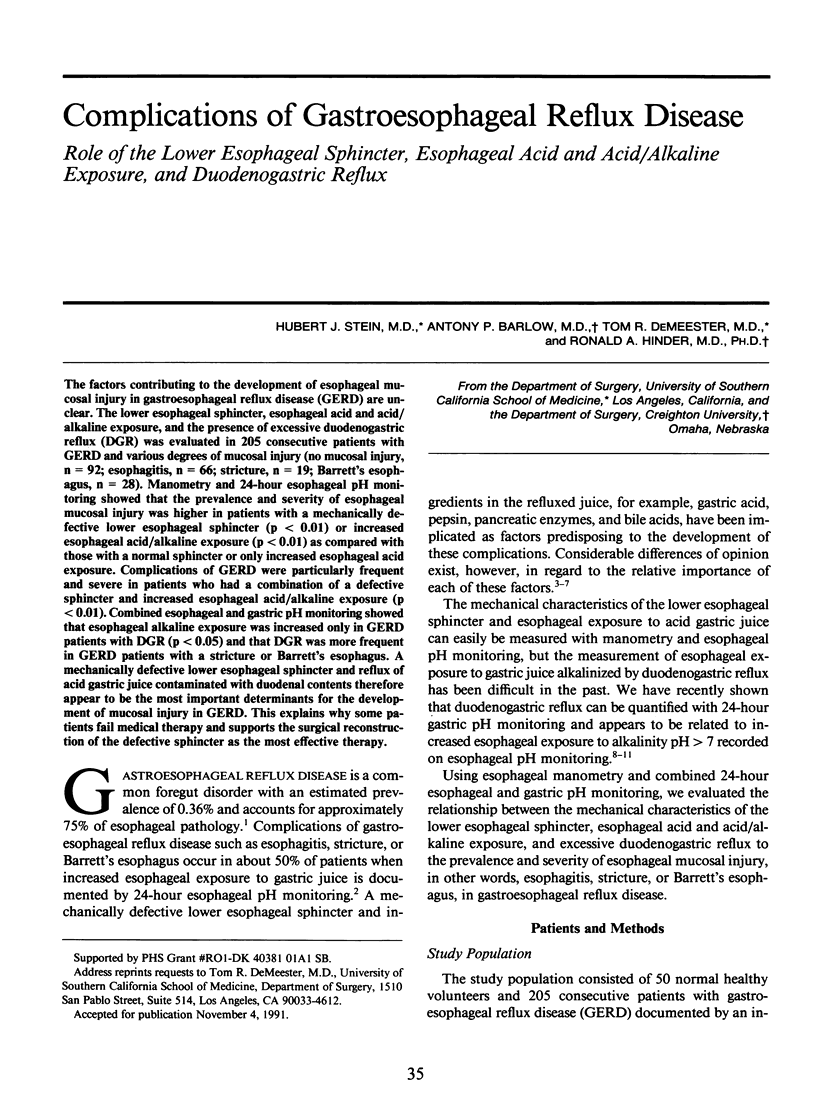
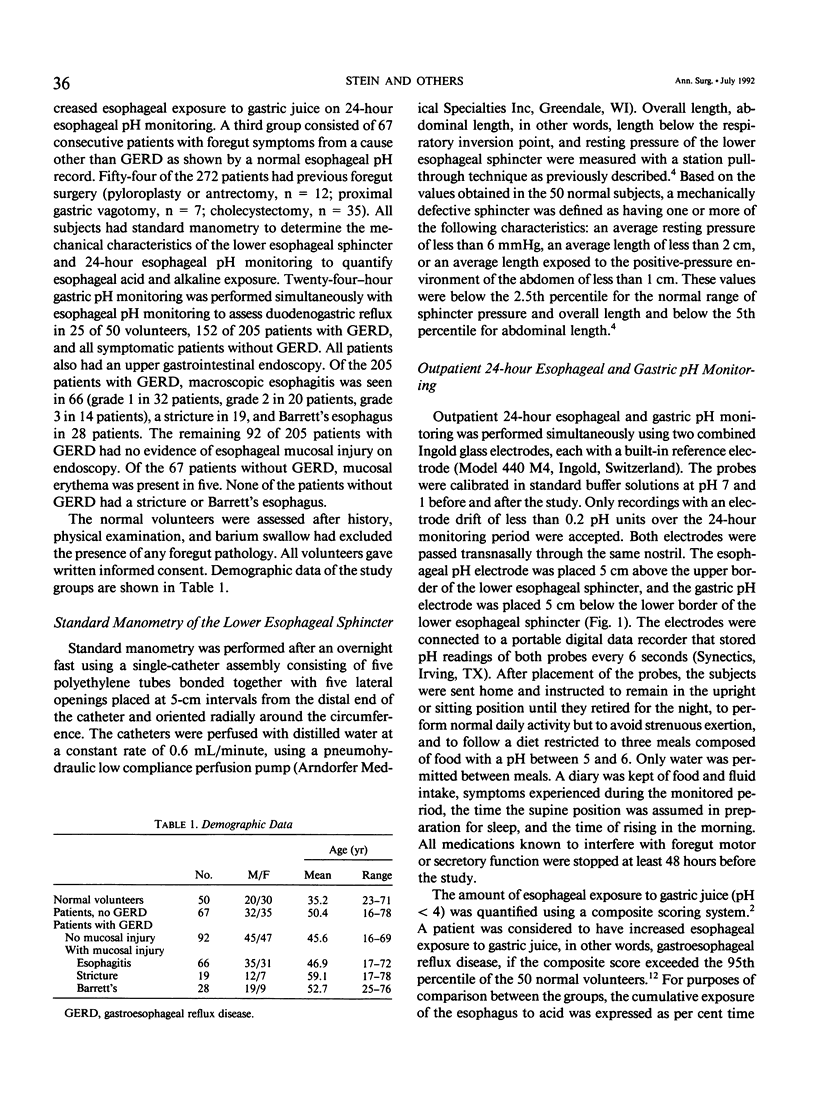
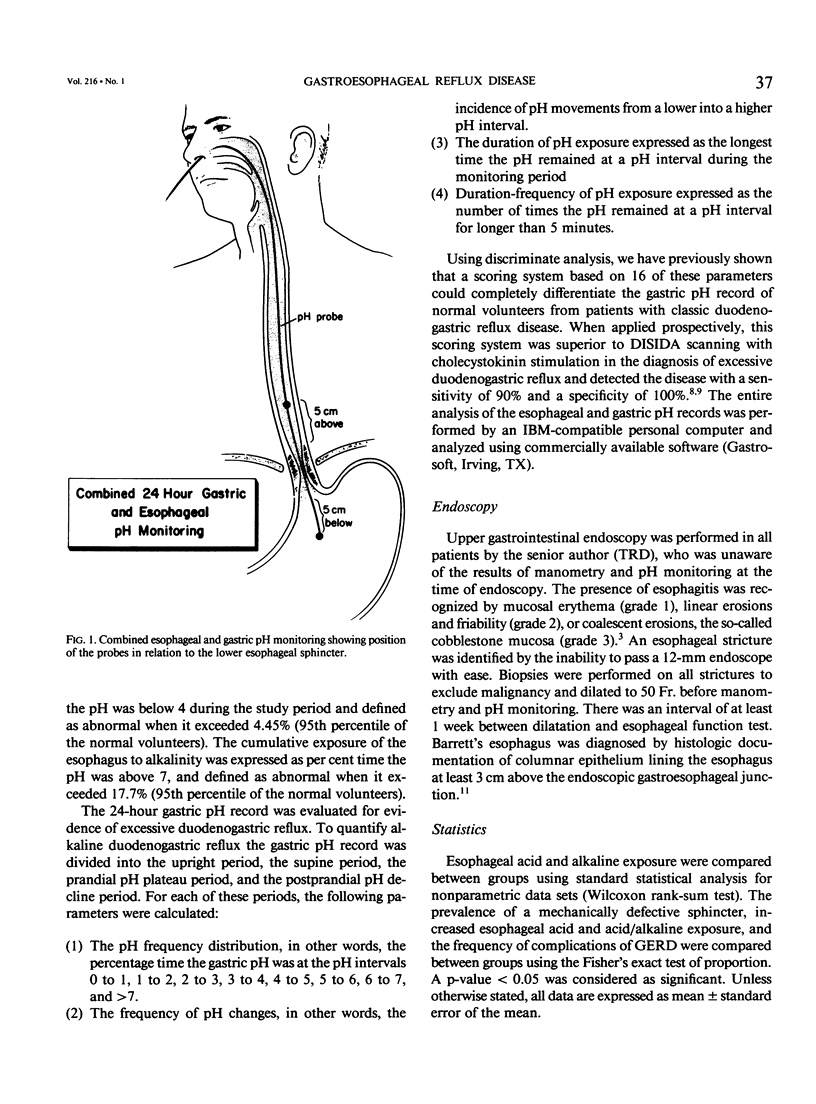
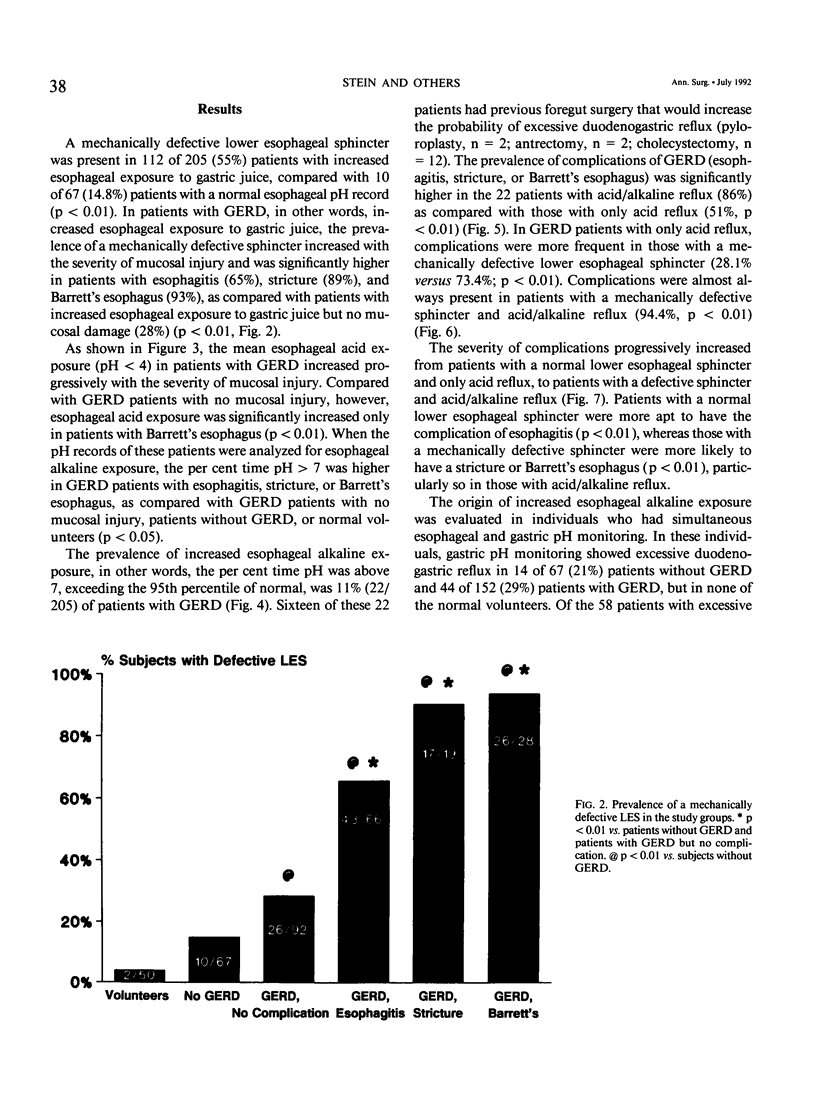
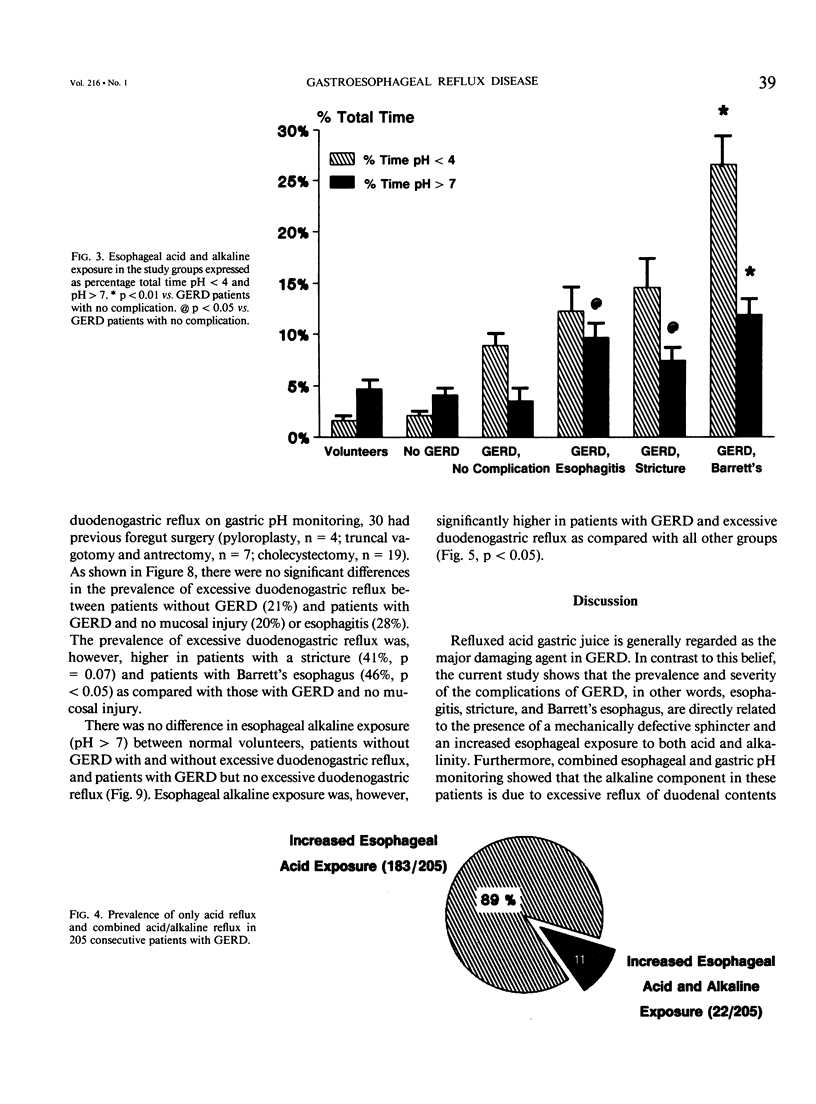
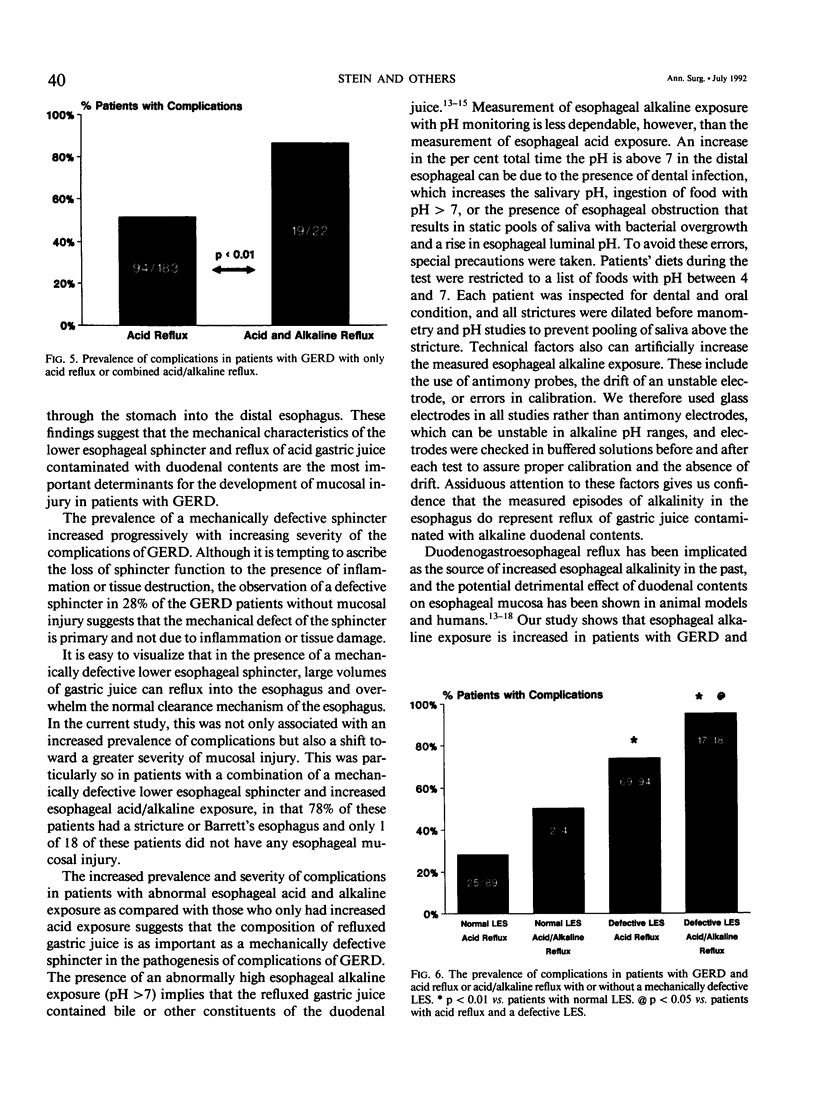
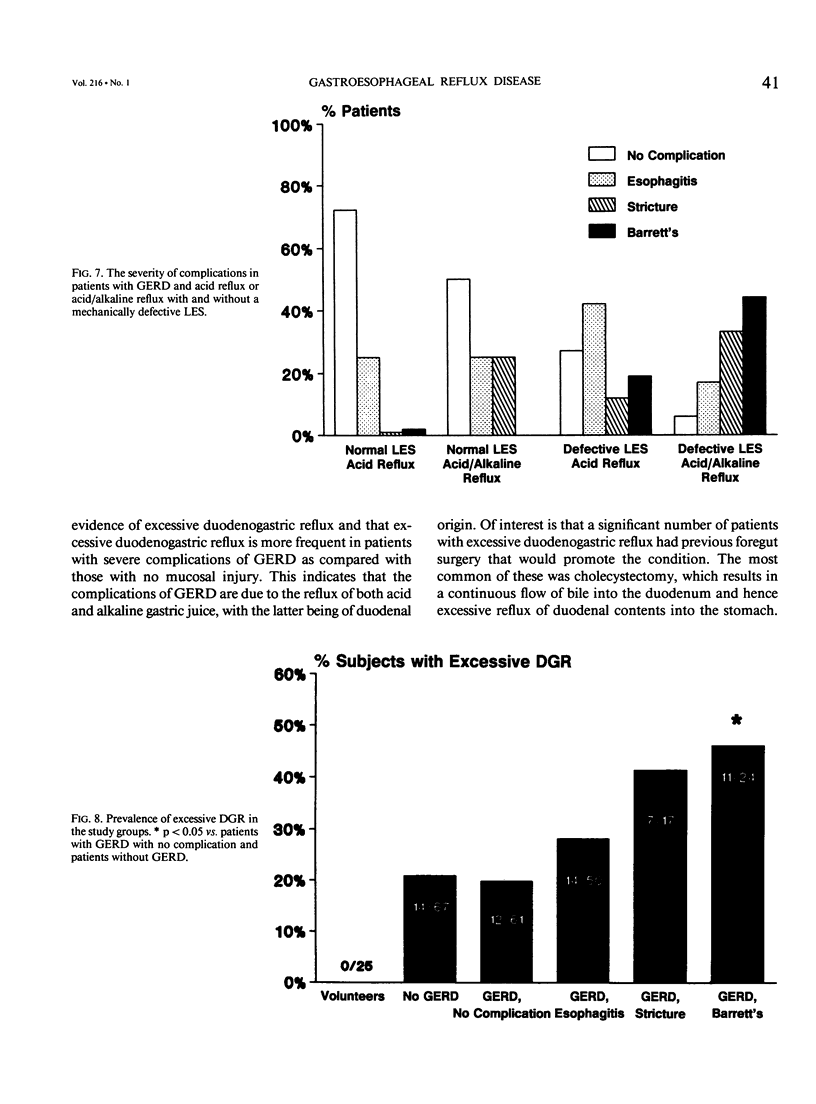
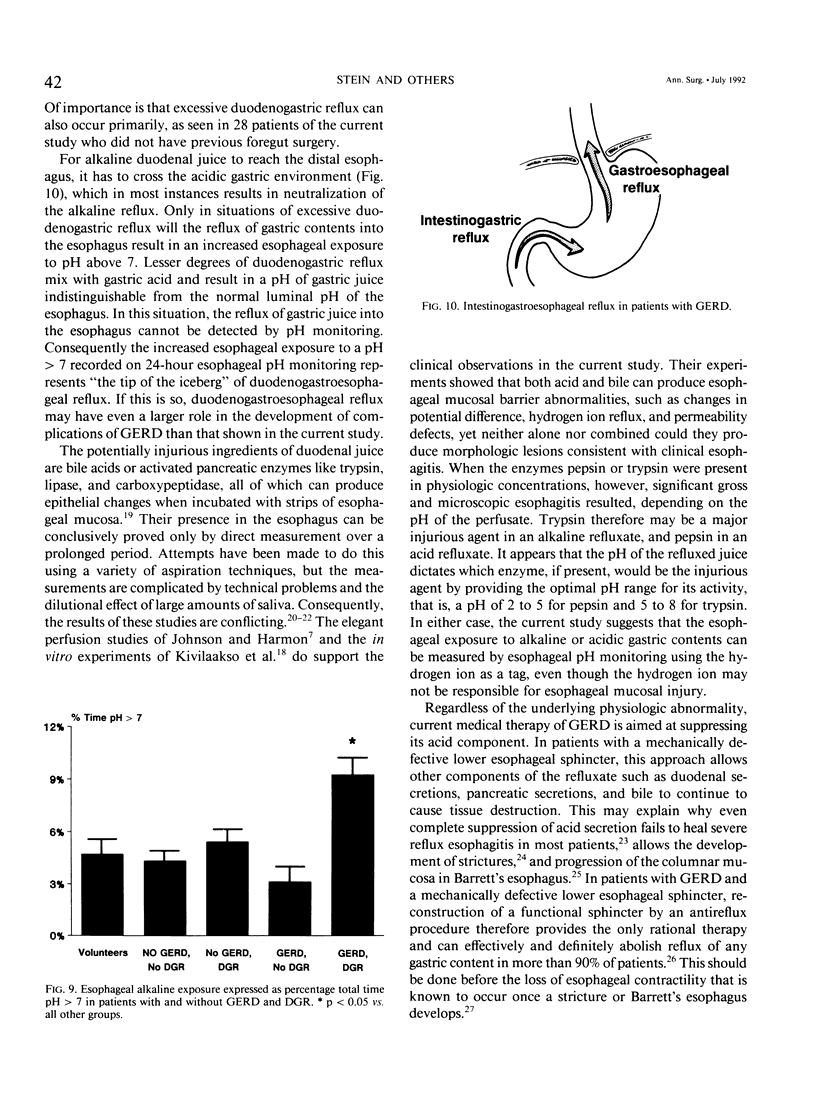
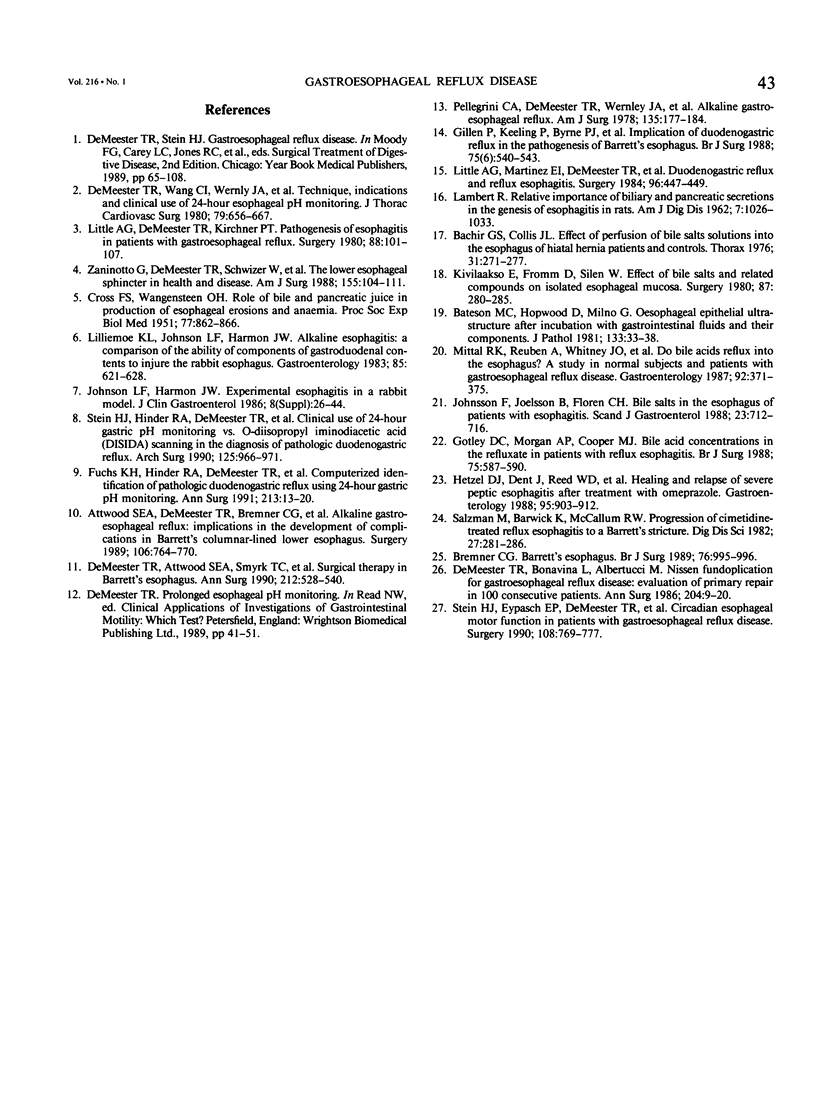
Selected References
These references are in PubMed. This may not be the complete list of references from this article.
- Attwood S. E., DeMeester T. R., Bremner C. G., Barlow A. P., Hinder R. A. Alkaline gastroesophageal reflux: implications in the development of complications in Barrett's columnar-lined lower esophagus. Surgery. 1989 Oct;106(4):764–770. [PubMed] [Google Scholar]
- Bachir G. S., Collis J. L. Effect of perfusion of bile salts solutions into the oesophagus of hiatal hernia patients and controls. Thorax. 1976 Jun;31(3):271–277. doi: 10.1136/thx.31.3.271. [DOI] [PMC free article] [PubMed] [Google Scholar]
- Bateson M. C., Hopwood D., Milne G., Bouchier I. A. Oesophageal epithelial ultrastructure after incubation with gastrointestinal fluids and their components. J Pathol. 1981 Jan;133(1):33–51. doi: 10.1002/path.1711330105. [DOI] [PubMed] [Google Scholar]
- Bremner C. G. Barrett's oesophagus. Br J Surg. 1989 Oct;76(10):995–996. doi: 10.1002/bjs.1800761002. [DOI] [PubMed] [Google Scholar]
- CROSS F. S., WANGENSTEEN O. H. Role of bile and pancreatic juice in production of esophageal erosions and anemia. Proc Soc Exp Biol Med. 1951 Aug;77(4):862–866. doi: 10.3181/00379727-77-18950. [DOI] [PubMed] [Google Scholar]
- DeMeester T. R., Attwood S. E., Smyrk T. C., Therkildsen D. H., Hinder R. A. Surgical therapy in Barrett's esophagus. Ann Surg. 1990 Oct;212(4):528–542. doi: 10.1097/00000658-199010000-00015. [DOI] [PMC free article] [PubMed] [Google Scholar]
- DeMeester T. R., Bonavina L., Albertucci M. Nissen fundoplication for gastroesophageal reflux disease. Evaluation of primary repair in 100 consecutive patients. Ann Surg. 1986 Jul;204(1):9–20. doi: 10.1097/00000658-198607000-00002. [DOI] [PMC free article] [PubMed] [Google Scholar]
- DeMeester T. R., Wang C. I., Wernly J. A., Pellegrini C. A., Little A. G., Klementschitsch P., Bermudez G., Johnson L. F., Skinner D. B. Technique, indications, and clinical use of 24 hour esophageal pH monitoring. J Thorac Cardiovasc Surg. 1980 May;79(5):656–670. [PubMed] [Google Scholar]
- Fuchs K. H., DeMeester T. R., Hinder R. A., Stein H. J., Barlow A. P., Gupta N. C. Computerized identification of pathologic duodenogastric reflux using 24-hour gastric pH monitoring. Ann Surg. 1991 Jan;213(1):13–20. doi: 10.1097/00000658-199101000-00003. [DOI] [PMC free article] [PubMed] [Google Scholar]
- Gillen P., Keeling P., Byrne P. J., Healy M., O'Moore R. R., Hennessy T. P. Implication of duodenogastric reflux in the pathogenesis of Barrett's oesophagus. Br J Surg. 1988 Jun;75(6):540–543. doi: 10.1002/bjs.1800750612. [DOI] [PubMed] [Google Scholar]
- Gotley D. C., Morgan A. P., Cooper M. J. Bile acid concentrations in the refluxate of patients with reflux oesophagitis. Br J Surg. 1988 Jun;75(6):587–590. doi: 10.1002/bjs.1800750632. [DOI] [PubMed] [Google Scholar]
- Hetzel D. J., Dent J., Reed W. D., Narielvala F. M., Mackinnon M., McCarthy J. H., Mitchell B., Beveridge B. R., Laurence B. H., Gibson G. G. Healing and relapse of severe peptic esophagitis after treatment with omeprazole. Gastroenterology. 1988 Oct;95(4):903–912. doi: 10.1016/0016-5085(88)90162-x. [DOI] [PubMed] [Google Scholar]
- Johnson L. F., Harmon J. W. Experimental esophagitis in a rabbit model. Clinical relevance. J Clin Gastroenterol. 1986;8 (Suppl 1):26–44. doi: 10.1097/00004836-198606001-00006. [DOI] [PubMed] [Google Scholar]
- Johnsson F., Joelsson B., Florén C. H., Nilsson A. Bile salts in the esophagus of patients with esophagitis. Scand J Gastroenterol. 1988 Aug;23(6):712–716. doi: 10.3109/00365528809093938. [DOI] [PubMed] [Google Scholar]
- Kivilaakso E., Fromm D., Silen W. Effect of bile salts and related compounds on isolated esophageal mucosa. Surgery. 1980 Mar;87(3):280–285. [PubMed] [Google Scholar]
- LAMBERT R. Relative importance of biliary and pancreatic secretions in the genesis of esophagitis in rats. Am J Dig Dis. 1962 Nov;7:1026–1033. doi: 10.1007/BF02231905. [DOI] [PubMed] [Google Scholar]
- Lillemoe K. D., Johnson L. F., Harmon J. W. Alkaline esophagitis: a comparison of the ability of components of gastroduodenal contents to injure the rabbit esophagus. Gastroenterology. 1983 Sep;85(3):621–628. [PubMed] [Google Scholar]
- Little A. G., DeMeester T. R., Kirchner P. T., O'Sullivan G. C., Skinner D. B. Pathogenesis of esophagitis in patients with gastroesophageal reflux. Surgery. 1980 Jul;88(1):101–107. [PubMed] [Google Scholar]
- Little A. G., Martinez E. I., DeMeester T. R., Blough R. M., Skinner D. B. Duodenogastric reflux and reflux esophagitis. Surgery. 1984 Aug;96(2):447–454. [PubMed] [Google Scholar]
- Mittal R. K., Reuben A., Whitney J. O., McCallum R. W. Do bile acids reflux into the esophagus? A study in normal subjects and patients with gastroesophageal reflux disease. Gastroenterology. 1987 Feb;92(2):371–375. doi: 10.1016/0016-5085(87)90130-2. [DOI] [PubMed] [Google Scholar]
- Pellegrini C. A., DeMeester T. R., Wernly J. A., Johnson L. F., Skinner D. B. Alkaline gastroesophageal reflux. Am J Surg. 1978 Feb;135(2):177–184. doi: 10.1016/0002-9610(78)90093-4. [DOI] [PubMed] [Google Scholar]
- Stein H. J., Eypasch E. P., DeMeester T. R., Smyrk T. C., Attwood S. E. Circadian esophageal motor function in patients with gastroesophageal reflux disease. Surgery. 1990 Oct;108(4):769–778. [PubMed] [Google Scholar]
- Stein H. J., Hinder R. A., DeMeester T. R., Lloyd B. A., Fuchs K. H., Attwood S. E., Gupta N. C. Clinical use of 24-hour gastric pH monitoring vs o-diisopropyl iminodiacetic acid (DISIDA) scanning in the diagnosis of pathologic duodenogastric reflux. Arch Surg. 1990 Aug;125(8):966–971. doi: 10.1001/archsurg.1990.01410200024002. [DOI] [PubMed] [Google Scholar]
- Zaninotto G., DeMeester T. R., Schwizer W., Johansson K. E., Cheng S. C. The lower esophageal sphincter in health and disease. Am J Surg. 1988 Jan;155(1):104–111. doi: 10.1016/s0002-9610(88)80266-6. [DOI] [PubMed] [Google Scholar]


